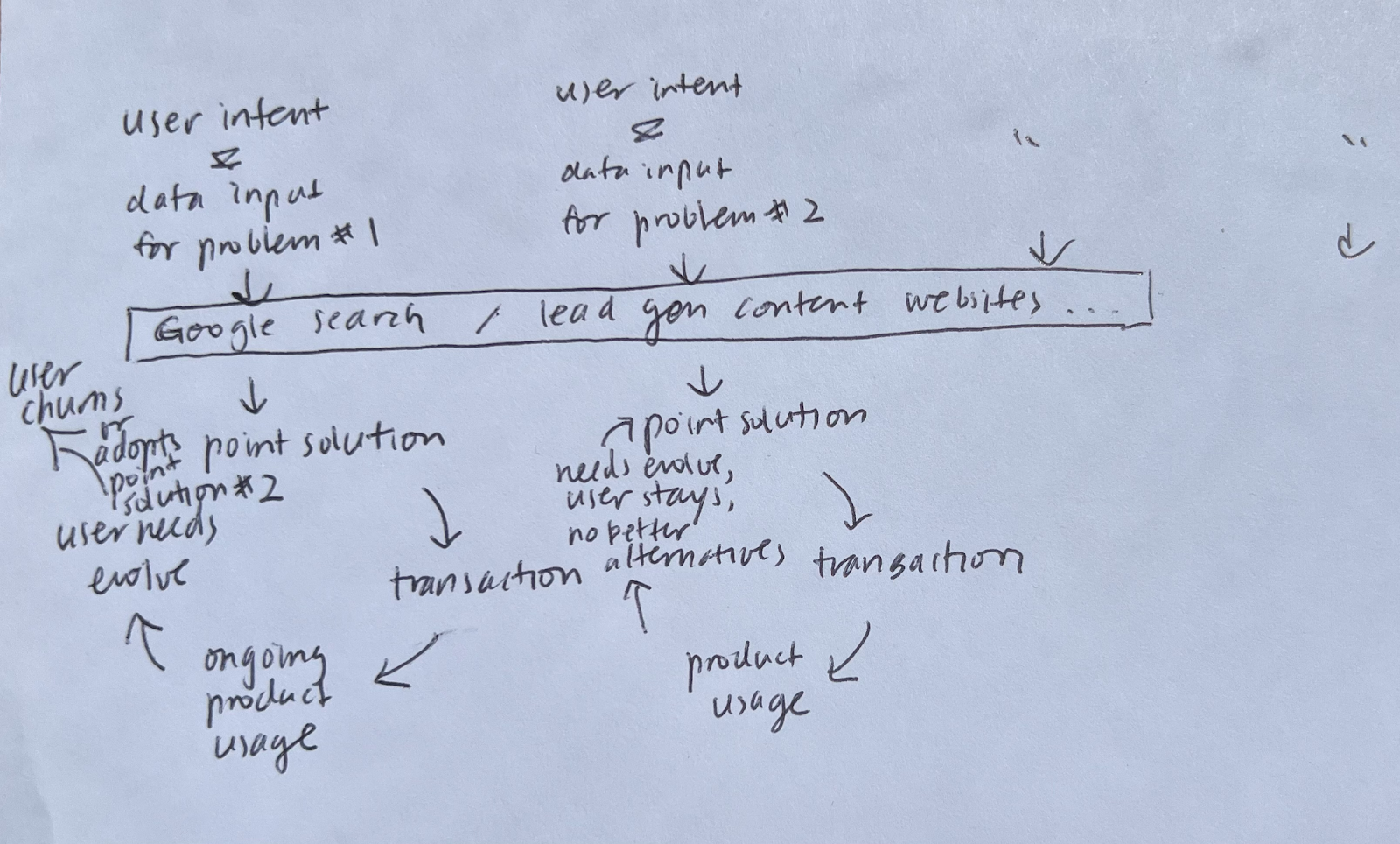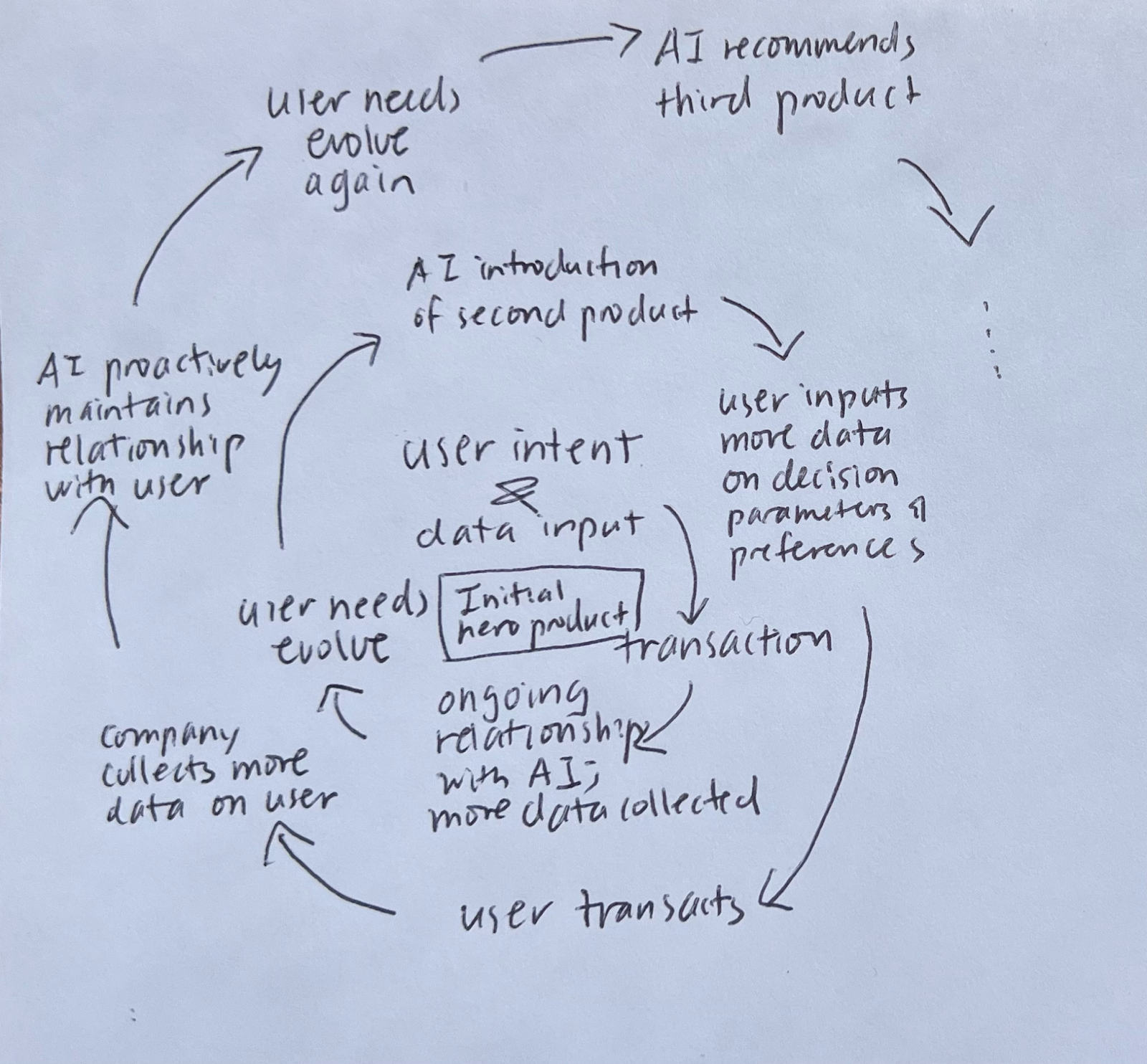As you know, 2025 is the year of agents. Much has been said about relationships with AI agents as a new moat.
Intimate AI x human relationships, via trusted AI agents, will emerge across many consumer verticals and apps. 👀👇
AI changes the strategic moats, revenue & profit generation of Internet companies.
User journey before AI (h/t [chris dixon] for the framework):
User → Device → OS → Internet access → web browser or App Store →
purchase intent discovery and generation → purchase harvesting → delivery of goods and/or services
After AI:
User → Device → OS → edge user data collection and interaction → Internet access →
web browser or App Store or agents → purchase intent discovery, generation and harvesting →
delivery of initial good/service → ongoing AI service or relationship, and continued user data collection
What’s changing due to AI:
- Individual data, aggregated user base level data, and industry/domain specific data collection and injection into end user experience will unlock a new set of consumer paradigms.
- Companies purpose-built with this data DNA will accrue compounding advantages due to network effects.
- There’s a first mover advantage for companies that execute this right.
The changing user journey affects a company’s strategy, moats, and future revenue and profits.
Owning early positions in the user journey allows a company to win by directing or redirecting the attention of consumers. For example, the Apple App Store can feature or bury any app, and Google’s SEO can rejigger any site’s search rank.
Companies later in the user journey compete and win based on best-in-class user experience capturing maximum attention, which translates to individual user trust and market-dominant brand position. For example: users go directly to Google or Meta’s suite of apps, rather than going through the App Store. Users go directly to Pinterest, Amazon, Meta or eBay’s sites rather than navigating through Google Search.
“Trusted recommenders” are the big platforms of tomorrow
These companies will bundle discovery and purchase intent generation (influence) with transactions; completing the entire purchasing loop from discovery to value capture. The most successful ones will be vertical super-apps that extend customer relationships beyond the transaction and initial hero product to adjacent key decisions and products.
Before AI, network effects were measured in user adoption. Now, network effects will be measured in enduring user trust.
Adoption is easy and fleeting, trust is hard and durable.
To gain initial trust from consumers, companies need to solve a huge and necessary pain better than all alternatives. But to maintain and deepen trust, companies need to continuously listen to the user, make the user feel seen, and sometimes solve other problems for them.
AI provides a big unlock: there is a new way to build trust now. How? Through forming authentic, personalized, and continuously engaged relationships with end users. With AI, the marginal cost of building deep relationships with users and extending those relationships over time is effectively zero (just inference costs).
From a product perspective, AI-first products can collect significant personalized user data on intent, taste/preferences, and decision making parameters and tailor products to taste. In the AI era, user-generated code and subsequent product interface is the new UGC (used-generated content in the pre-AI era).
As a consumer, you experience having a companion with full context of you in a given domain, perfect memory of your past experiences, preferences and considerations, engaging and disengaging at your whim to your style and tone. AI-first apps will build a perfect model of you and deliver a right-fit experience at the right-time.
To use a retail analogy, luxury sales associates, client relationship managers, and special customer experiences such as personalized events are now economically possible for all companies, even if the business is in a low margin or low AOV industry. Marginal costs before AI: you hire a salesperson and even pay commission; you hold events and hire marketers to engage and even re-acquire customers. Now: inference costs.
Pre-AI:

With AI:

Examples of vertical, “trusted recommenders”:
A dating app could start from a tool to help you efficiently find and filter matches, engage your prospective dates, and eventually as you enter a relationship, support and guide your relationship.
A styling app could provide daily outfit recommendations or final touch suggestions, and over time recommend clothes and accessories that match your style and existing wardrobe for purchase. In contrast, currently, Google Search, Instagram, editorial magazines online or offline and Pinterest serve as non-personalized top of funnel inspiration today. These apps don’t know what you own, your exact style preferences, your location and weather needs, etc.
A consumer fintech player that starts with helping you apply for and pick a mortgage could, in 3-6 months, also help you with your investment portfolio and eventually estate planning. In contrast, the previous generation was full of point solutions at the intent layer (Credit Karma, Nerdwallet) or execution layer (Chime, Robinhood).
A SMB app could provide owners superpowers of having a marketing creative agency, a seo consultant, a social media campaign manager all-in-one over time.
There are compounding advantages for first movers that build the best initial and ongoing trust. The flywheel for an individual user: provide data for the initial hero product, transact (or not), and come back and provide more data when there’s a similar decision or inquiry next time.
As the platform gathers critical mass of high quality user data, it provides a better user experience for all users - first time or repeat - through better, more personalized guidance and recommendations. For companies in industries with industry-specific proprietary data, this best-in-class consumer experience attracts industry partnerships. This creates network effects. Together, the individual user flywheel and network effects create a virtuous cycle for a company to win in its vertical.
Vertical, “trusted recommender” companies will have completely new business model contours: elongating user lifetimes, increasing user lifetime values, and expanding TAMs.
I started a small research group for those excited here. Founders, builders and designers, operators and investors who want to join, DMs open.


